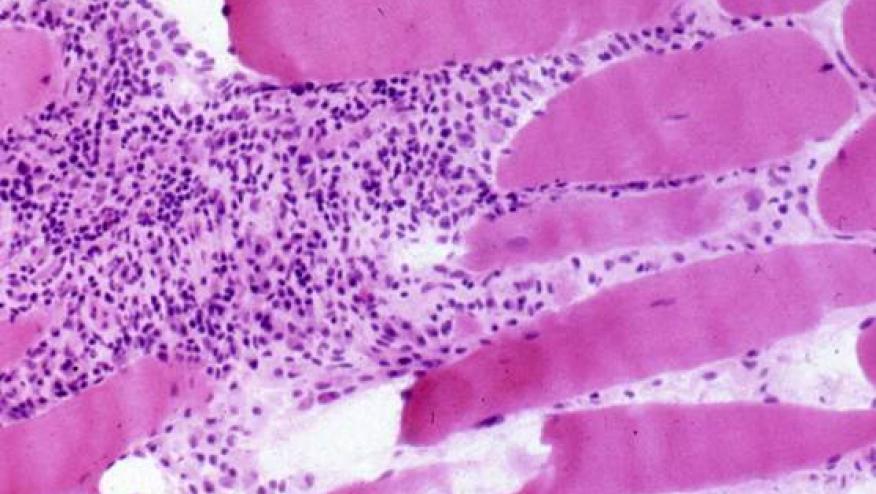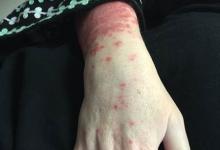TIF1-Ab in Dermatomyositis Linked to Higher Cancer Risk Save

Several epidemiological studies have reported that a diagnosis of DM or PM may be associated with increased cancer risk. The association appears stronger for DM than PM. Based on a meta-analysis, DM cancer risk is five times higher than in the general population and twice that compared with PM cancer risk.
Findings from a 2007 analysis of the prevalence of anti-IF1-Ab in IIM cases showed that 50% of anti-TNF1-Ab-positive cases also had cancer-associated myositis (CAM). Additional anti-TIF1-Ab-positive/-negative patients were recruited in this follow-up study of the same cohort up to 10 years. The overall goal was to compare the 10-year cancer risk in anti-TIF-Ab-positive vs –negative DM cases using UKMyoNet data.
Patients were recruited from 74 centers throughout the U.K. Data about demographics and clinical patterns were collected, and all participants had blood samples taken to detect autoantibodies to determine the presence of MSA anti-synthetases (anti-Jo-1, -PL7, -PL12, -EJ, -OJ, -KS, -Zo), other MSAs (anti-TIF1, -Mi-2, -SAE, -SRP, -MDA5, -NXP2, -HMGCR), and MAA (anti-PM-Sci, -Ku, -U1-RNP, -U3-RNP). A total of 55 out of 263 DM cases (21%) were anti-TIF1-Ab positive. The majority were women, and median age at DM diagnosis was 47.
An increased proportion of anti-TIF1-Ab-positive cases developed cancer throughout the study period compared with anti-TIF1-Ab-negative cases (38%) vs (15%). Cancer development in the anti-TIF1-Ab-positive cohort occurred between 3.5 years prior to and 2.5 years after DM onset. While 21 of the anti-TIF1-Ab-positive cases (53%) who were at least 39 years old developed cancer, those matched patients younger than age 39 did not develop cancer over the study period.
In the anti-TIF1 positive group, the most common types of malignancy were breast cancer (33%), ovarian cancer (19%), and lymphoma (14%). In the anti-TIF1 negative group, the most common tumors were breast cancer (25%), lymphoma (13%), and bowel cancer (13%). Ovarian cancer was markedly higher in the anti-TIF1 positive group (19% vs 2%, P<0.05).
Strengths of this study include the large datasets used and long-term detection; however, by definition patients would have had to survive long enough to be recruited into the UKMyoNet. According to the National Institutes of Health, the 2017 European League Against Rheumatism (EULAR) /American College of Rheumatology (ACR) EULAR/ACR classification criteria for adult and juvenile IIM are based on a probability score in which 16 clinical and laboratory features are summed to develop a probability of having an IIM; further sub-classification is needed to identify DM. Since this consensus was only developed recently, there may be inaccuracy in the diagnosis of symptom onset; however, the investigators deemed this to be unlikely, as there was a substantial difference in cancer incidence between the anti-TIF1-Ab-positive and –negative cohorts.
The long-term relationship between anti-TIF1-positive-Ab status and cancer onset was analyzed in this retrospective U.K. study. Patients with DM who were also positive for the anti-TIF1-Ab were at more than threefold increased risk for cancer, the investigators found. In keeping with separate findings, this study identified that the significant association between anti-TIF1-Ab positivity and early cancer diagnosis exists only for those >39 years of age. Anti-TIF1 positive cancer occurred within 3 years either side of the DM onset, and no incident malignancies were detected in this group within the next 7.5 years, whereas cancers were detected during this later period in the anti-TIF1-Ab-negative cases.
Looking for anti-TIF1-Ab in newly diagnosed DM cases could help with the development of a cancer screening plan of action. Previous studies have noted the increased risk for ovarian cancer among women with DM, but this is also the first study to determine that the risk was primarily among the anti-TIF1 positive group, "suggesting that the true association between DM and ovarian cancer may be through possession of anti-TIF1 antibodies. Clinicians should therefore apply increased vigilance for potential ovarian pathology in anti-TIF1 antibody positive cases," the researchers wrote.
"Our findings also strengthen the hypothesis that inflammatory myopathies represent a paraneoplastic reaction initiated by attempted immune-mediated clearance of a cancer," the team concluded.










If you are a health practitioner, you may Login/Register to comment.
Due to the nature of these comment forums, only health practitioners are allowed to comment at this time.